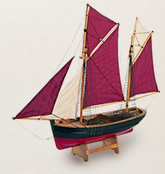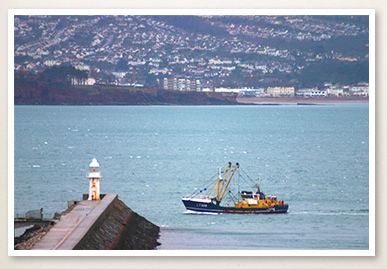

In the Middle Ages, Brixham was the largest fishing port in the South-West,
and at one time it was the greatest in England. Known as the "Mother
of Deep-Sea Fisheries", its boats sailed all round the coast and helped
to establish the fishing industries of Hull, Grimsby and Lowerstoft. In
the 1890s there were about 300 trawling vessels here, each owned by one
man who was often the skipper of his own boat.
There is still a big fishing fleet, and you can see them coming in and out
of the harbour, followed by flocks of seagulls. The fish market is open
to the public on two special days in the summer, when the finer points of
catching and cooking fish will be explained to you. The modern boats are
diesel-driven, but several of the old sailing trawlers have been preserved
and are being brought back to life.